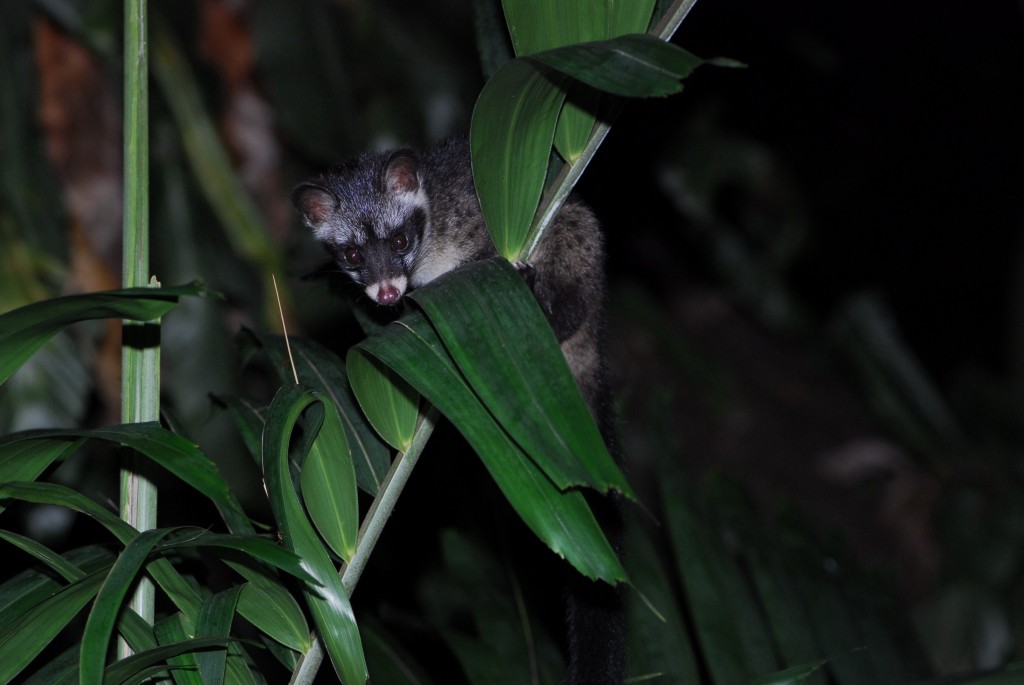This blog post is in response to the AsiaOne article “Breaking roofs, trashing kitchens: Bedok residents plagued by civets invading their homes” (29 Nov 2022) https://www.asiaone.com/singapore/breaking-roofs-trashing-kitchens-bedok-residents-plagued-civets-invading-their-homes
Do our civets deserve a bad representation in the media?
“Trashing”, “plagued” and “invaded” – almost every other word in the title of the article gives off a negative and frightening feel, especially if one may be unaware of one of our nocturnal wildlife, the common palm civets.
The civet in question, the common palm civet (Paradoxurus musangus) is adapted to urban areas especially with low housing density and with small patches of vegetation and fruit trees. They are usually solitary, unless it’s a mother with young. They are often shy and only venture out under the cover of darkness. These small forest patches are an important refugia for these shy civets to retreat back to rest in the day and only move out to forage for fruits and sometimes, small insects or prey.
For every human-wildlife conflict, there is always an interplay of factors – humans, animals and we often forget about the immediate environment. The residents at Jalan Chempaka Puteh (in Bedok) stay in a civet hotspot area. This means that there is a higher chance of encountering civets naturally. Human-wildlife encounters can be challenging and feel unfamiliar for residents in the midst of it and sometimes, they might not be aware of other solutions besides trapping. While trapping can remove civets, it is not a wildlife friendly solution, as civets might be injured in the process and it could also be temporary, if the premises (the environment) persist to be attractive to the civets.
A more preemptive and permanent approach would be to safely exclude civets from the premises. This means that entry points need to be safely closed up so that their house/property would not become a target for opportunistic wildlife looking for a snack. Professional help is available and could be sought so that the civets can be safely excluded and no young civets are left trapped within the premises.
Human-wildlife conflict is always complex but with time and effort, effective and wildlife friendly solutions can be found. Residents in the midst of such conflict need to know that there are groups/agencies willing to have a conversation and listen in to the problems that they face. It will take time but the end goal for both parties are the same, as we spare thought to both residents and the civets. As Singapore moves towards a City in Nature vision, we all have a part to play in attaining human-wildlife coexistence and it starts from a little more awareness and consideration for others, which include people, our living space and our wildlife neighbours.
If you would like to refer to more resources:
- Our Wild Neighbours initiative by the Urban Wildlife Working Group (UWG) and other partners from the Nature Community – https://www.ourwildneighbours.sg/our-wild-neighbours/common-palm-civet
- ACRES Promoting Coexistence with Singapore’s wildlife: Civet Advisory – https://acres.org.sg/campaigns/current-campaigns/human-wildlifeconflict/#1636169081514-9a2ae343-c188
- NParks’ Advisory for civets – https://www.nparks.gov.sg/gardens-parks-and-nature/dos-and-donts/animal-advisories/civets
- Nature Society Singapore, NatureWatch 29 (4) Oct-Dec 2021, My Name is Musang, Furget Me Not, pp 10 – 15 – https://www.nss.org.sg/articles/72ab0700-0NatureWatch2021-Q4Entire(1).pdf
Fung Tze Kwan and Xu Weiting (NUS)


